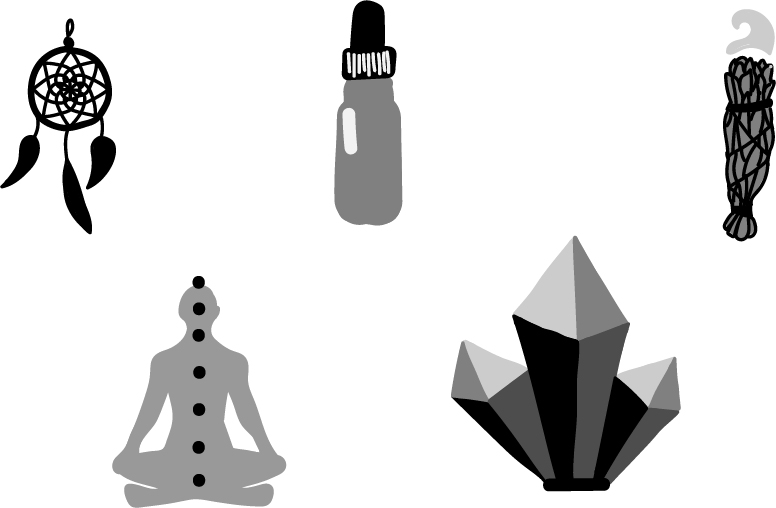the appropriation of spirituality
western spirituality unfairly steals from other religions
Whenever we think of appropriation, we typically think of pop culture. We think of Kim Kardashian’s box braids and Nessa Barrett dancing to an audio of the Quran. However, appropriation and commodification of eastern, African, and native spirituality has been widely overlooked
Recently, spiritual practices involving crystals, chakras, and other metaphysical beliefs have become more widespread. Although this practice is often associated with paganism, these practices have deeper roots in Buddhism, Hinduism, Native American culture, and African culture.
One example of appropriated spirituality is the misconception of chakras, which originated from the Hindu and Tantric Buddhism religions. Chakras are energy points in the body; in western culture, it is believed that there are seven of them. However, many people who believe in chakras don’t know that there were originally supposed to be anywhere between 4 and 100 or more. In western culture, the “seven chakras” are represented as energy spots going down the center of the human body. In reality, chakras can exist outside the physical body.
Additionally, chakras are now believed to have essential oils, colors, and crystals associated with them. Many are unaware that this isn’t the original belief surrounding chakras.
Despite the harmful nature of this development,, it may not have been done entirely on purpose or with malicious intent. Many who studied Hinduism and Buddhism had to study documents that were written in Sanskrit, which is widely used in Hinduism, Sikhism, and Buddhism. It is likely that some meanings were changed or, quite literally, lost in translation.
In order to overcome this appropriation of religion, there are three measures one can take. The first is to avoid feeling “white guilt”, a term for feelings of shame that arise from the historic maltreatment of other ethnicities by caucasian people. Next, it is important to recognize the origins of certain spiritual practices. For example, learn how manifestation and meditation originated in “Sanatana Dharma” and Buddhism. A good place to start is reading about African, Asian, and Native American spirituality. Finally, use a wide variety of sources when educating yourself. One “educator” may simply describe the purposes of “smudging” or sage-burning, whereas another will add that burning white-sage is offensive to Indigenous culture. One “educator” may say that dreamcatchers prevent nightmares, whereas another may advise that a dreamcatcher is bought strictly from a native person (This ensures that the money will not go to a company that is enabling cultural appropriation.) Whether someone is just beginning their enlightening journey or is a meditation master, striving to learn about the origins of their practices will ensure that they are helping to create a more respectful spiritual community.

Stephanie Kontopanos is a senior and the assistant editor of The Tiger Print. This is her third year on staff and her second year being the Newspaper Grandma...




